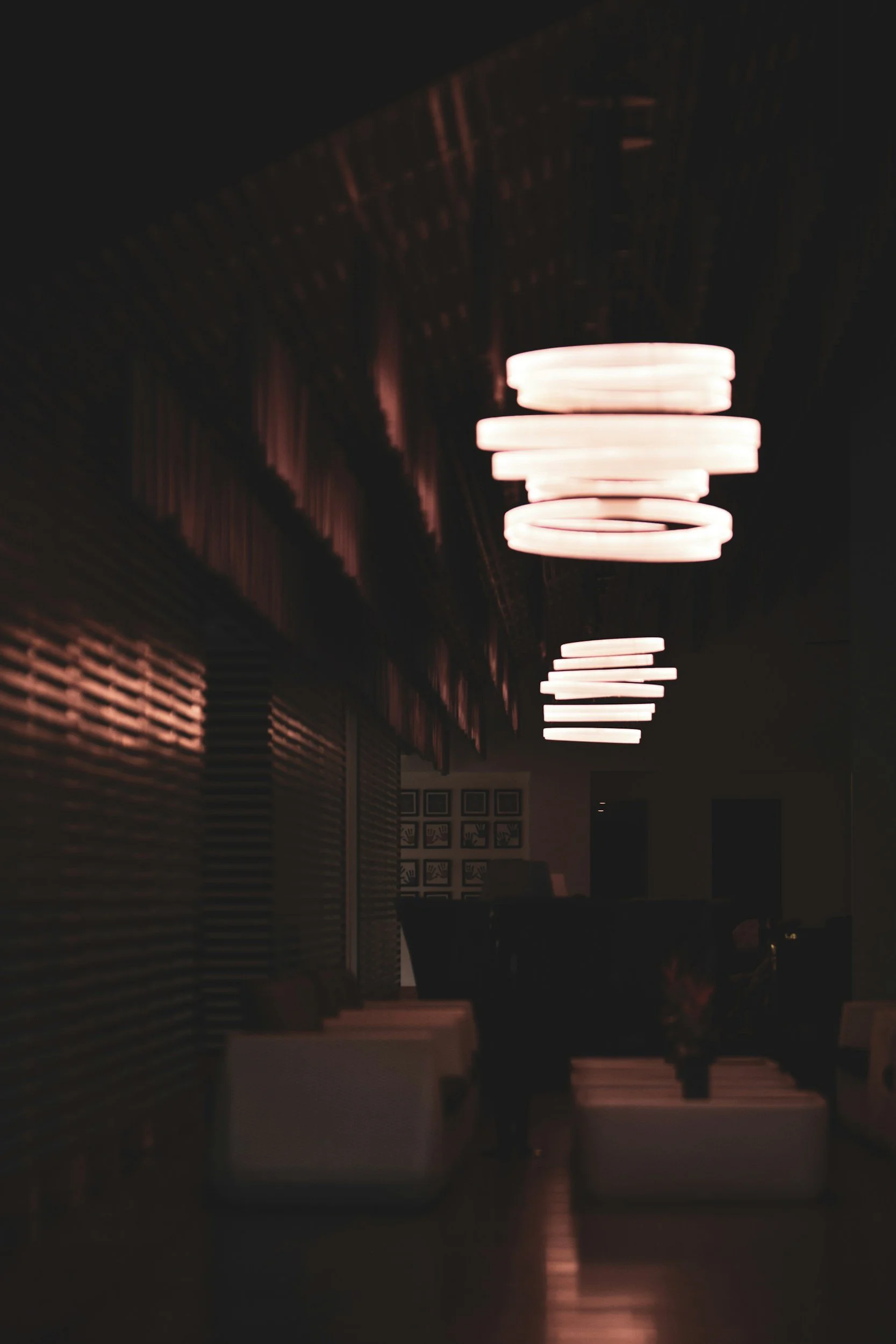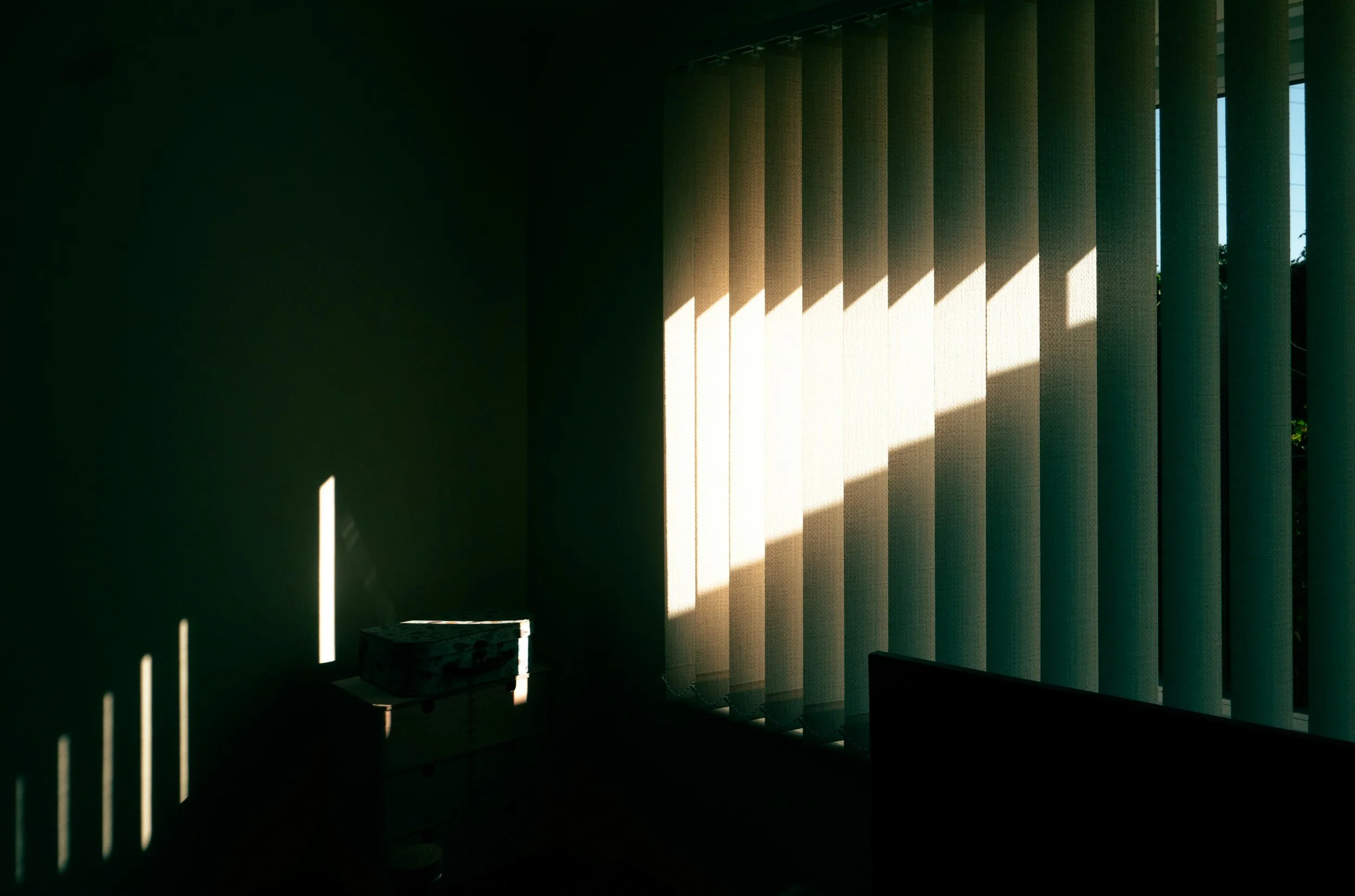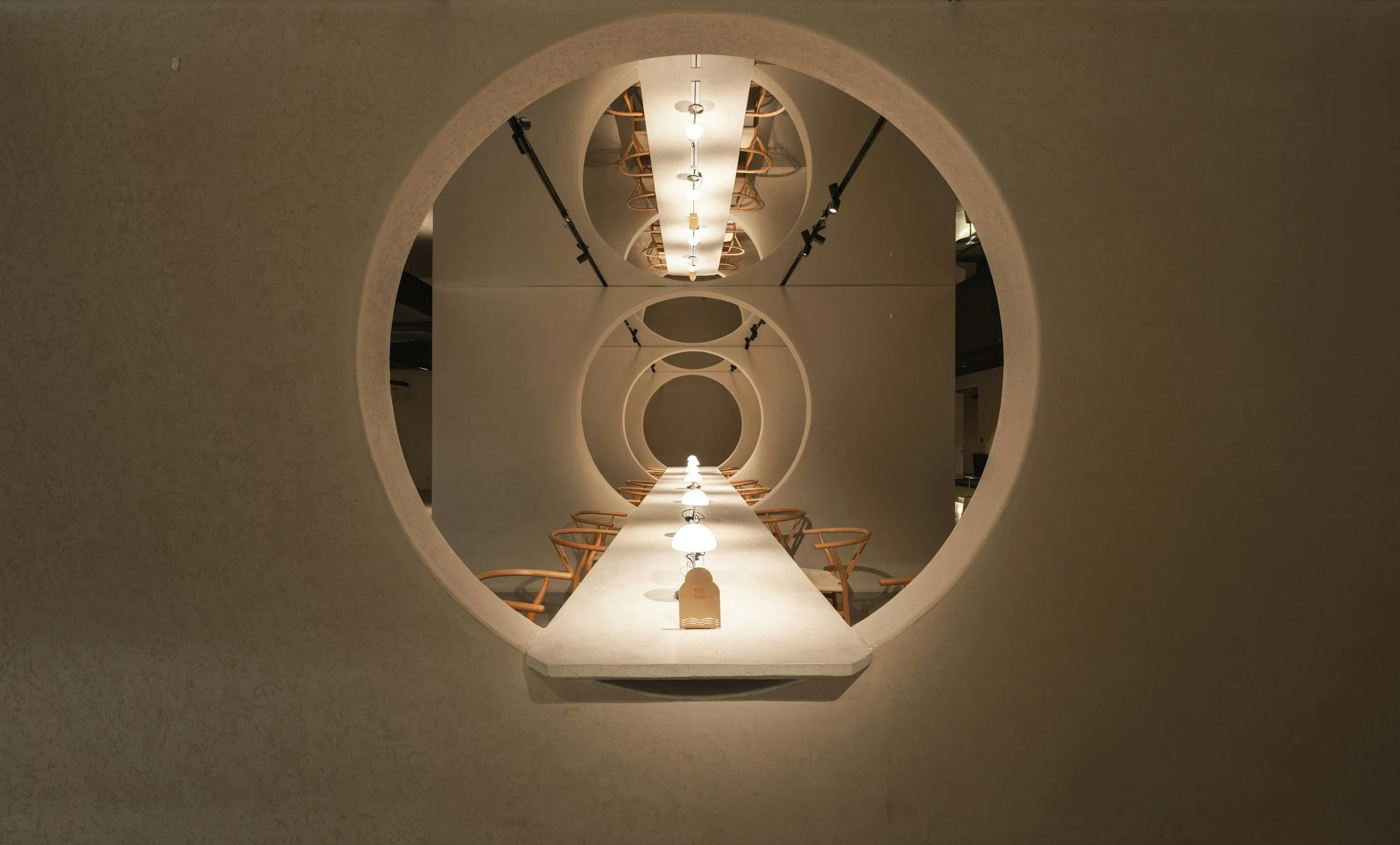Where the Light Gathers - A Curious Study in the Smallest Design Decisions We Don’t Always See
Some spaces feel right the moment you enter.
You don’t know why. But your shoulders relax. Your pace softens. You pause without realising you’ve paused. Something in the air invites you to stay just a little longer.
It’s easy to assume it’s the furniture, or the scent, or the silence. But often, it’s something more elusive. Not the thing itself, but how the thing is shown.
The shape of a room, the way surfaces reflect, the angle at which your glass of water catches a quiet glow — these are small decisions. Gentle ones. And yet, they change everything.
This is a quiet exploration of those decisions. A study in the unseen. A way of thinking about hospitality not as style, but as atmosphere.
A Colour You Can Feel
Not all white is white. Not all warmth is warm.
A space lit in soft gold feels like evening, even if it’s morning. It draws your attention inward. Toward rest, reflection, ease. The light reminds you of home, of fire, of places where time slows down. A whiter tone, closer to blue, feels clearer, sharper, more alert. It’s good for breakfast. For business meetings. For making plans.
And somewhere in between, there is a neutral temperature that offers no opinion. It neither warms nor chills. It simply lets you be. This neutrality can be useful — in corridors, in dressing rooms, in places of transition. But when used everywhere, it risks making everything feel the same.
These are subtle shifts, but they matter. A tone that’s slightly too cool can make a guest feel exposed. A tone that’s too yellow can flatten colour and texture. The right hue — even if it’s just five percent warmer — can alter mood completely.
It’s worth noticing, next time: how the temperature of a room affects your tone of voice.
Where It Comes From Matters
A room that glows from the ceiling feels very different than one that glows from the floor.
Overhead, brightness can be practical, efficient. But when the source is closer to the human body — to the edge of a chair, the line of the table, the space beneath the bed — something changes. The space becomes grounded.
When glow surrounds rather than rains down, people tend to speak more softly. They make eye contact for longer. They move with more care.
A candle between two people doesn’t just provide light. It creates a small zone of focus. A conversation shaped by shadow. The intimacy isn’t an accident. It’s a result of positioning.
Think of how different it feels when a pendant lamp hovers just above your head. It sharpens the silhouette of your hands. It defines the meal. It signals that you are meant to stay.
The position of glow is not just a design decision. It’s a signal. A way of speaking without words.
A Room That Doesn’t Reveal Everything All At Once
Some spaces give everything away in the first second. Others unfold slowly.
A soft line of gold under a bench. A narrow beam that outlines a sculpture. A bathroom mirror that reveals its edges only after you enter. These are gestures, not statements. They allow curiosity to stay in the room.
When every corner is brightly lit, the eye tires. But when some areas recede into softness, the guest feels permission to move more gently. To wonder.
Shadow, in this sense, is not a lack. It is a presence. A kind of punctuation.
In traditional Indian homes, shadow is used with intention. Verandahs open into courtyards. Niches glow in partial darkness. Even temples — the most sacred of spaces — often reveal themselves in layers. One room leads to another. One source of light leads to silence.
This is not style. It’s rhythm.
Reflections Are Part of the Composition
A room is not just a collection of objects. It’s a canvas of surfaces.
What those surfaces do with light — how they hold it, scatter it, absorb it — shapes the experience in quiet but unforgettable ways.
A velvet curtain absorbs and calms. A brass sconce reflects and dances. Linen softens. Concrete mutes.
When glow bounces off terrazzo, it adds a shimmer beneath the guest’s feet. When it’s caught by carved wood, it reveals history in texture. A mirror multiplies space. A woven mat diffuses it.
None of these are tricks. They are collaborations.
A thoughtful room does not simply contain objects. It arranges relationships. The relationship between stone and sun. Between guest and table. Between wall and window.
The Joy of Layers
Some spaces feel flat. Others feel rich, without being cluttered. The difference is not furniture. It is layering.
One soft light for orientation. Another for atmosphere. A third that highlights a shelf, a plant, a piece of art. These aren’t just sources. They are roles. Like instruments in a musical ensemble. Each contributes its part. But together, they form feeling.
Layering doesn’t mean complexity. It means listening. Letting one tone lead, while the others accompany.
The result is a room that feels composed — not just arranged.
The Rhythm of the Day
Great spaces know that no one light setting works across all hours.
Morning asks for openness. Something clear. Something that lets the guest feel like they can begin again. Midday prefers neutrality. A tone that lets lunch feel crisp and conversation alert. Evening wants hush. A soft surrender.
When a hotel room follows this rhythm, it does something wonderful. It becomes not just a container for the guest’s day — but a participant in it.
Even a single dimmer switch can offer this subtle companionship. Even a curtain that softens the glare.
Spaces that move with the sun tend to feel more human. Because they remember that we, too, change with the light.
Spaces That Glow Without Explaining Themselves
Some rooms don’t show their sources at all. They simply glow. As if the room itself were breathing.
This kind of integration is rare. It requires planning. Craft. Restraint. But when done well, the guest never notices. They just feel more at ease.
The wall itself may glow. Or the handrail. Or the seam beneath the headboard. The source is hidden — but the comfort is real.
These are the spaces that stay with us. The ones we think about later. Not because they showed off, but because they knew how to disappear.
How Light Frames Ritual
Every hospitality experience contains rituals. The morning routine. The evening wind-down. The shared meal. The slow bath.
When light supports these rituals, the experience deepens.
A lamp that gently lights the teacup in the morning does more than provide visibility. It sets a tone. A dimmed hallway that guides you to your room after dinner does not just show you the way. It tells your body that the day is closing.
These rituals aren’t always grand. They can be as small as brushing your hair. Or reading a page before bed. When supported by quiet design, they become sacred.
Not because of what they are — but because of how they are held
The Intelligence of Quiet Corners
Some rooms have corners that ask nothing of you. They aren’t the main attraction. They don’t perform.
But they are often where the guest feels most at ease.
A glow by the window. A chair just touched by evening light. A stairwell where the wall catches the soft spill from below. These moments aren’t directed. They aren’t announced. But they hold emotion.
Quiet corners don’t demand. They receive.
They offer something rare in design. Not attention, but affection.
A Final Thought
Not every guest will point to these things. They may not know the colour temperature. Or the height of the fixture. Or the angle of the bounce.
But they will feel it. In their breath. In how long they linger. In what they remember weeks later.
That is the gift of thoughtful illumination. Not to be noticed — but to be felt.
It is not about decoration. It is about dignity.
It does not ask to be seen. It simply creates the conditions for people to see each other.
And that, perhaps, is the highest form of hospitality there is.












